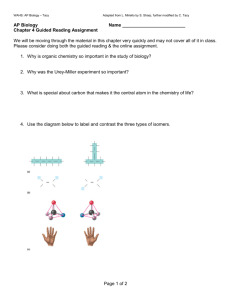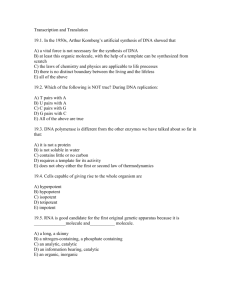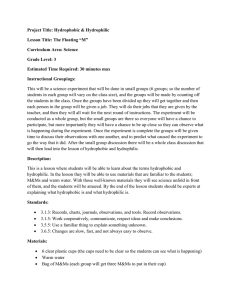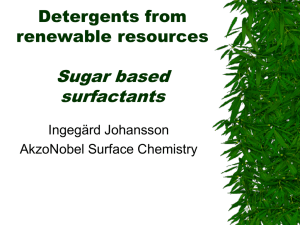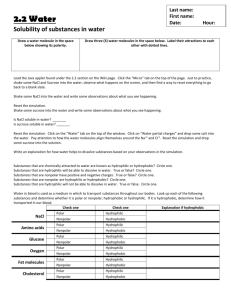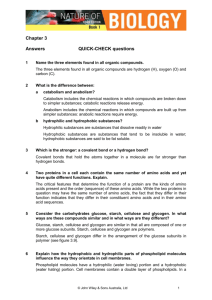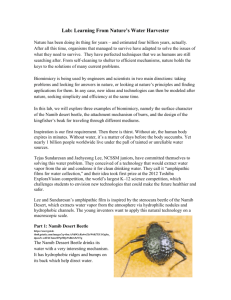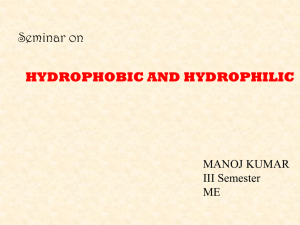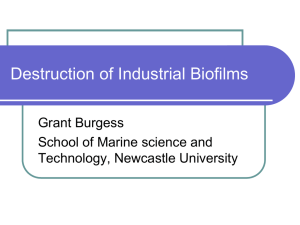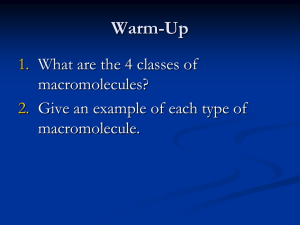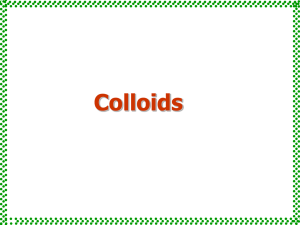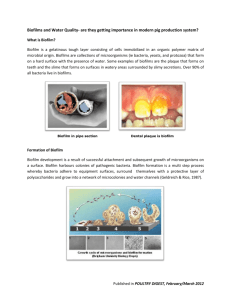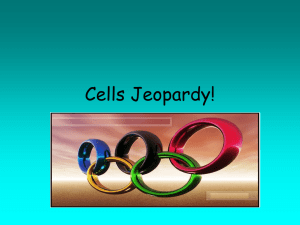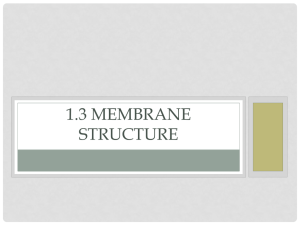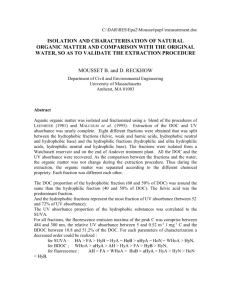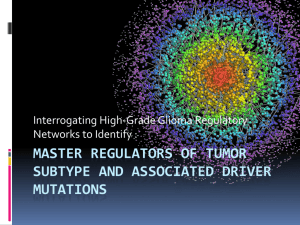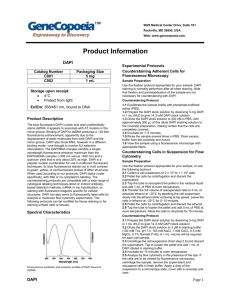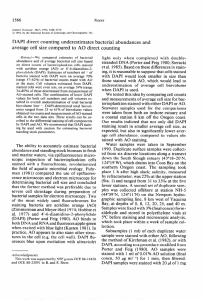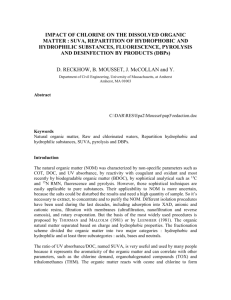Characterization of the bacterial biofilm population in wettable and
advertisement
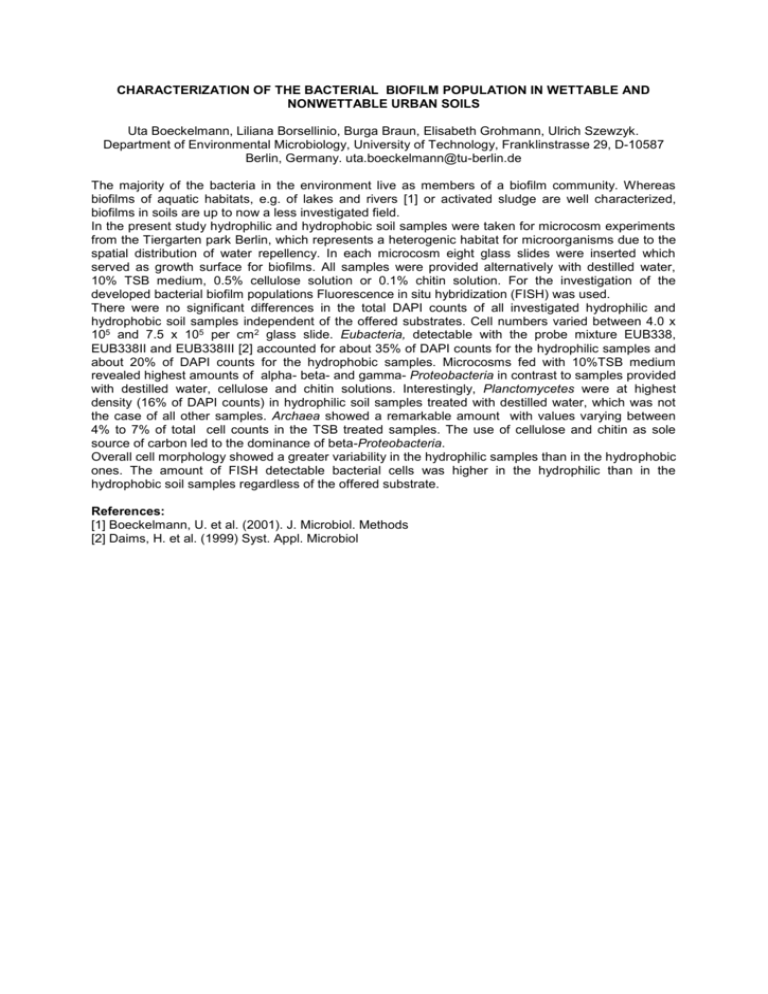
CHARACTERIZATION OF THE BACTERIAL BIOFILM POPULATION IN WETTABLE AND NONWETTABLE URBAN SOILS Uta Boeckelmann, Liliana Borsellinio, Burga Braun, Elisabeth Grohmann, Ulrich Szewzyk. Department of Environmental Microbiology, University of Technology, Franklinstrasse 29, D-10587 Berlin, Germany. uta.boeckelmann@tu-berlin.de The majority of the bacteria in the environment live as members of a biofilm community. Whereas biofilms of aquatic habitats, e.g. of lakes and rivers [1] or activated sludge are well characterized, biofilms in soils are up to now a less investigated field. In the present study hydrophilic and hydrophobic soil samples were taken for microcosm experiments from the Tiergarten park Berlin, which represents a heterogenic habitat for microorganisms due to the spatial distribution of water repellency. In each microcosm eight glass slides were inserted which served as growth surface for biofilms. All samples were provided alternatively with destilled water, 10% TSB medium, 0.5% cellulose solution or 0.1% chitin solution. For the investigation of the developed bacterial biofilm populations Fluorescence in situ hybridization (FISH) was used. There were no significant differences in the total DAPI counts of all investigated hydrophilic and hydrophobic soil samples independent of the offered substrates. Cell numbers varied between 4.0 x 105 and 7.5 x 105 per cm2 glass slide. Eubacteria, detectable with the probe mixture EUB338, EUB338II and EUB338III [2] accounted for about 35% of DAPI counts for the hydrophilic samples and about 20% of DAPI counts for the hydrophobic samples. Microcosms fed with 10%TSB medium revealed highest amounts of alpha- beta- and gamma- Proteobacteria in contrast to samples provided with destilled water, cellulose and chitin solutions. Interestingly, Planctomycetes were at highest density (16% of DAPI counts) in hydrophilic soil samples treated with destilled water, which was not the case of all other samples. Archaea showed a remarkable amount with values varying between 4% to 7% of total cell counts in the TSB treated samples. The use of cellulose and chitin as sole source of carbon led to the dominance of beta-Proteobacteria. Overall cell morphology showed a greater variability in the hydrophilic samples than in the hydrophobic ones. The amount of FISH detectable bacterial cells was higher in the hydrophilic than in the hydrophobic soil samples regardless of the offered substrate. References: [1] Boeckelmann, U. et al. (2001). J. Microbiol. Methods [2] Daims, H. et al. (1999) Syst. Appl. Microbiol
